1. They’re Back and They’re Spreading Fast
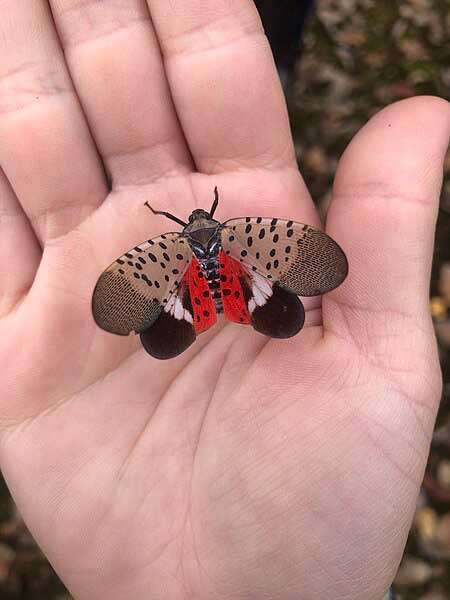
If you have noticed colorful bugs hopping around your yard lately, you might have met the spotted lanternfly. Originally from Asia, they have now settled in at least 17 states and are moving quickly. They thrive in many environments, which makes their spread difficult to control. Experts say the most helpful thing you can do is squash them on sight. Each one you remove means fewer eggs next season. It may feel strange at first, but this small action helps protect gardens, farms, and trees from damage that can add up faster than most people realize.
2. You’ll Find Them on Trees, Fences, and Sidewalks
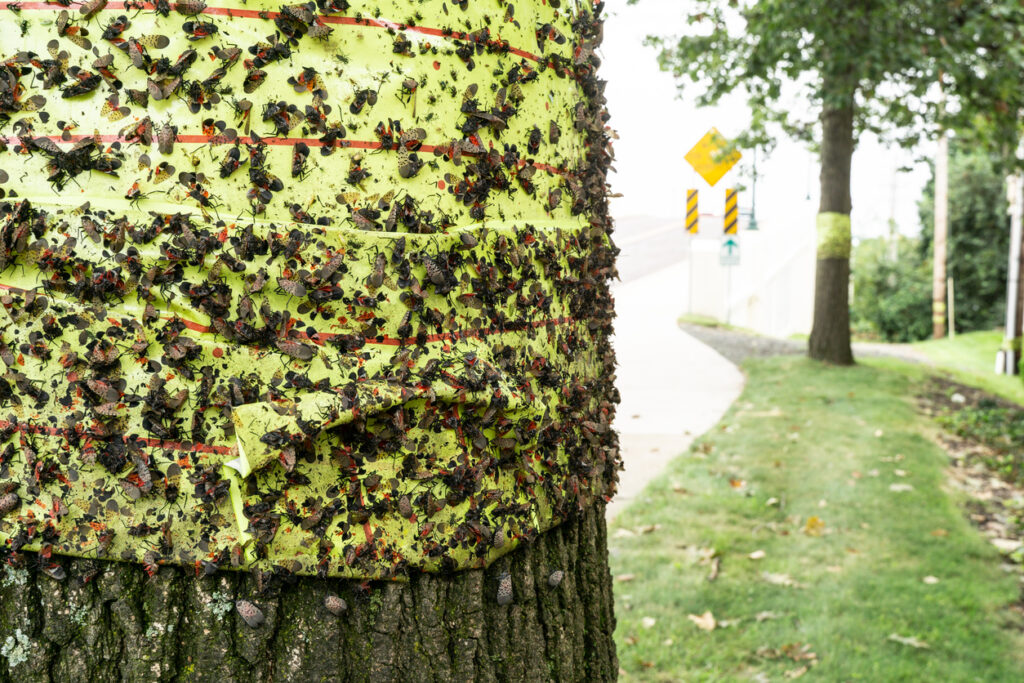
Take a slow walk outside in late summer and you might spot a lanternfly resting on a fence post or tree trunk. They are attracted to vertical surfaces, which makes them easy to notice if you know where to look. Their bright red underwings are hard to miss once they mature. You might even see them along porch rails or clinging to the side of a building. If you do, the best thing is to act quickly before they move away. These bugs are quick jumpers, but persistence can make a real difference in keeping them under control.
3. Their Favorite Hangout Is the Tree of Heaven
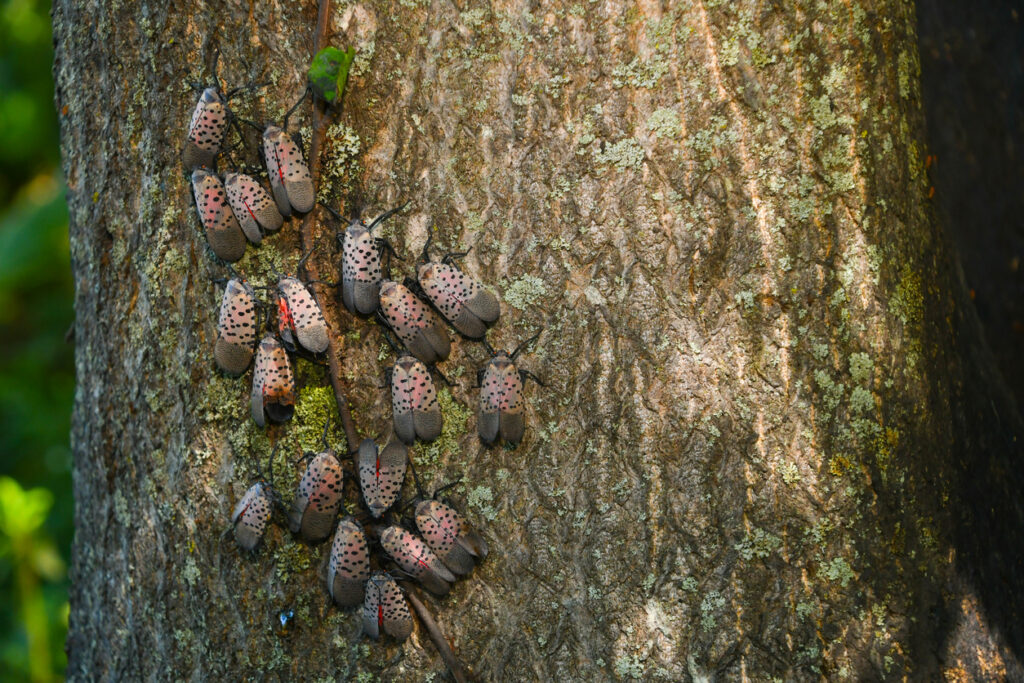
There is one tree that these insects love more than any other and it is called the tree of heaven. It grows in vacant lots, along highways, and in many spots where little else thrives. To lanternflies, this tree is like a perfect restaurant, offering easy access to the sap they feed on. If you see a tree filled with spotted insects, there is a good chance it is this species. Removing or treating these trees can make your area less inviting to lanternflies and give native plants and trees a better chance to grow strong and healthy.
4. They’re Crushing Crops in Wine and Apple Country
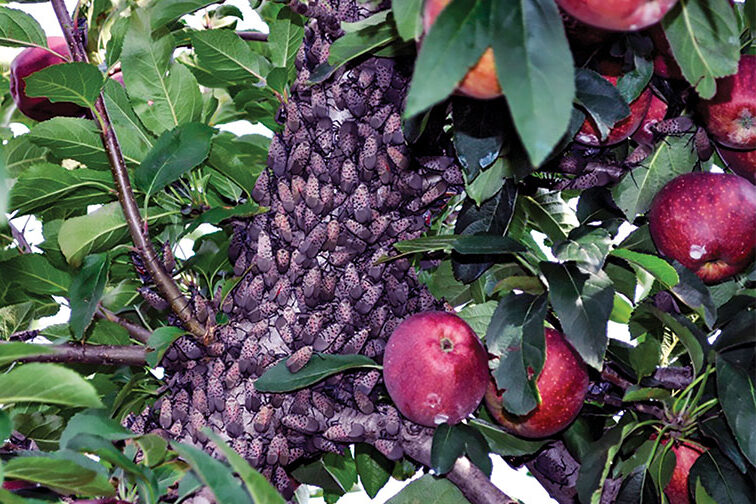
Wine lovers and apple fans have more reason than most to dislike the spotted lanternfly. These pests feed on grapevines and fruit trees, draining sap and weakening the plants. Vineyards in Pennsylvania, Virginia, and New York have reported damage that could hurt harvests for years to come. For winemakers and orchard owners, the threat is more than just an inconvenience. It is a direct hit to their livelihood. When you stomp one of these bugs, you are helping protect more than just your garden. You are taking part in a bigger effort to preserve important crops across entire regions.
5. They Lay Eggs on Cars, Trains, and Firewood
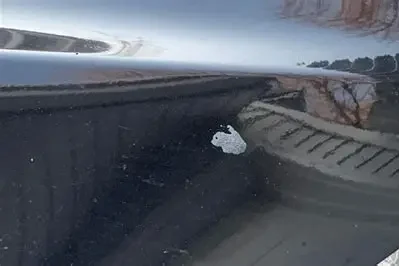
One of the most frustrating things about lanternflies is how easily they travel. They lay their eggs on cars, trucks, trains, and even stacks of firewood. The eggs are small and covered in a mud-like coating, so they blend in with whatever they are stuck to. This is how the insects have managed to spread so widely in such a short time. If you are moving outdoor items or traveling through an area with known lanternfly problems, take a moment to check for eggs. Scraping them off before they hatch helps stop the cycle right in its tracks.
6. They’re Active Longer Than Ever Before
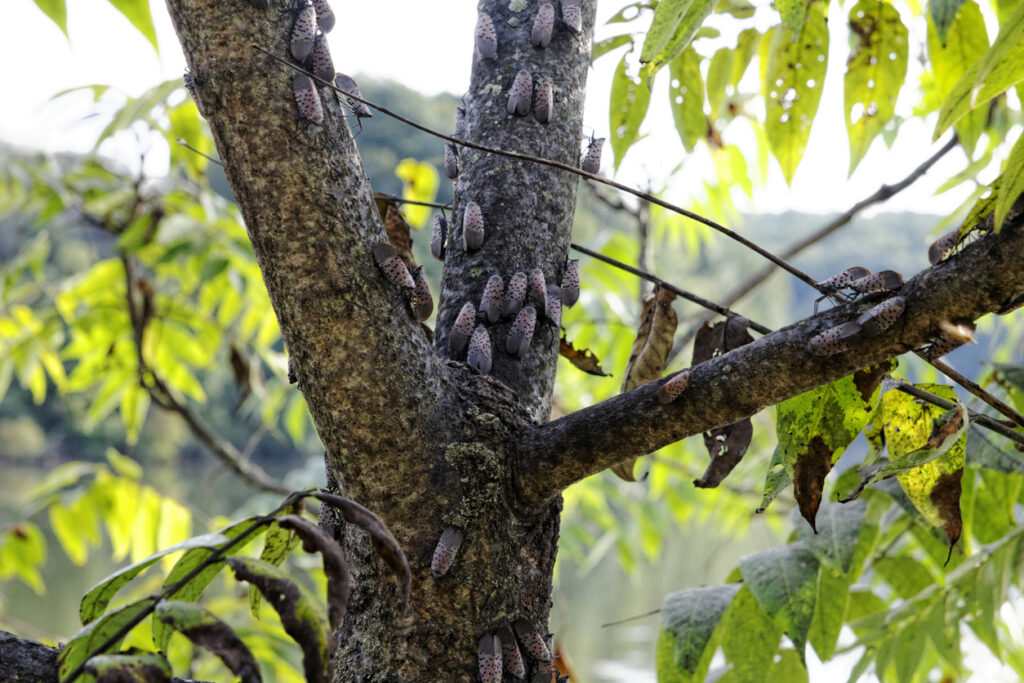
Warmer seasons have been a gift to the spotted lanternfly. With mild winters and early springs, these bugs are appearing sooner and sticking around longer than before. Adults can now survive well into the fall, and each one has the potential to lay dozens of eggs. That means more bugs and more damage each year. It also means you have a longer window to help control them. Instead of thinking it is too late in the season, take action whenever you see one. Every step you take now can mean fewer lanternflies appearing in the next year’s warmer months.
7. They’re Not Just Ugly They’re Deadly to Trees
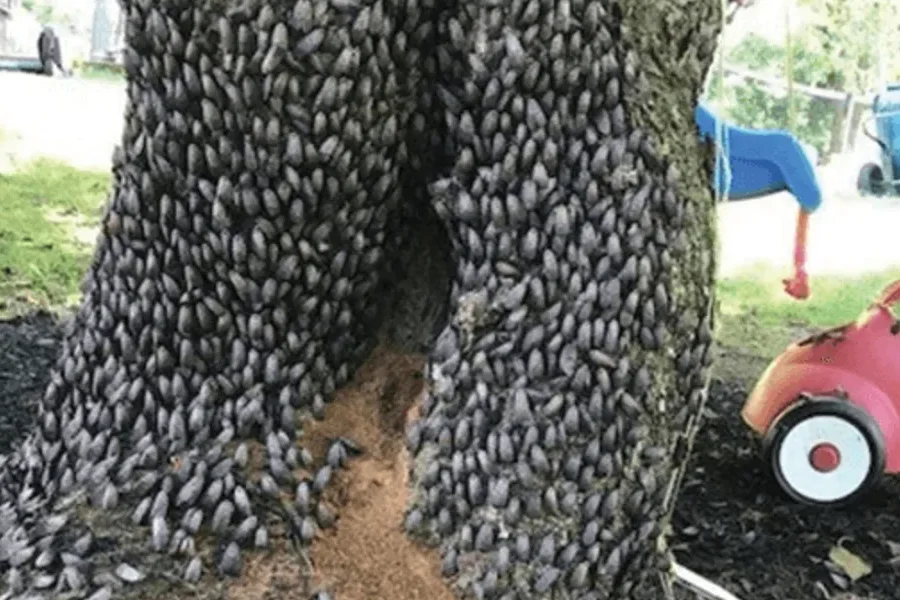
The spotted lanternfly does more than just look unpleasant. It weakens trees by feeding on their sap, leaving behind a sticky substance called honeydew. This residue encourages the growth of sooty mold, which blocks sunlight from reaching the leaves. Without enough sunlight, the tree’s ability to produce food for itself is reduced, eventually leading to decline or death. Even strong, healthy trees can suffer when lanternflies are left unchecked. By removing them when you see them, you are helping protect the natural beauty of your surroundings and ensuring that trees continue to provide shade, oxygen, and shelter for years.
8. They’re Not Going Away Without Your Help
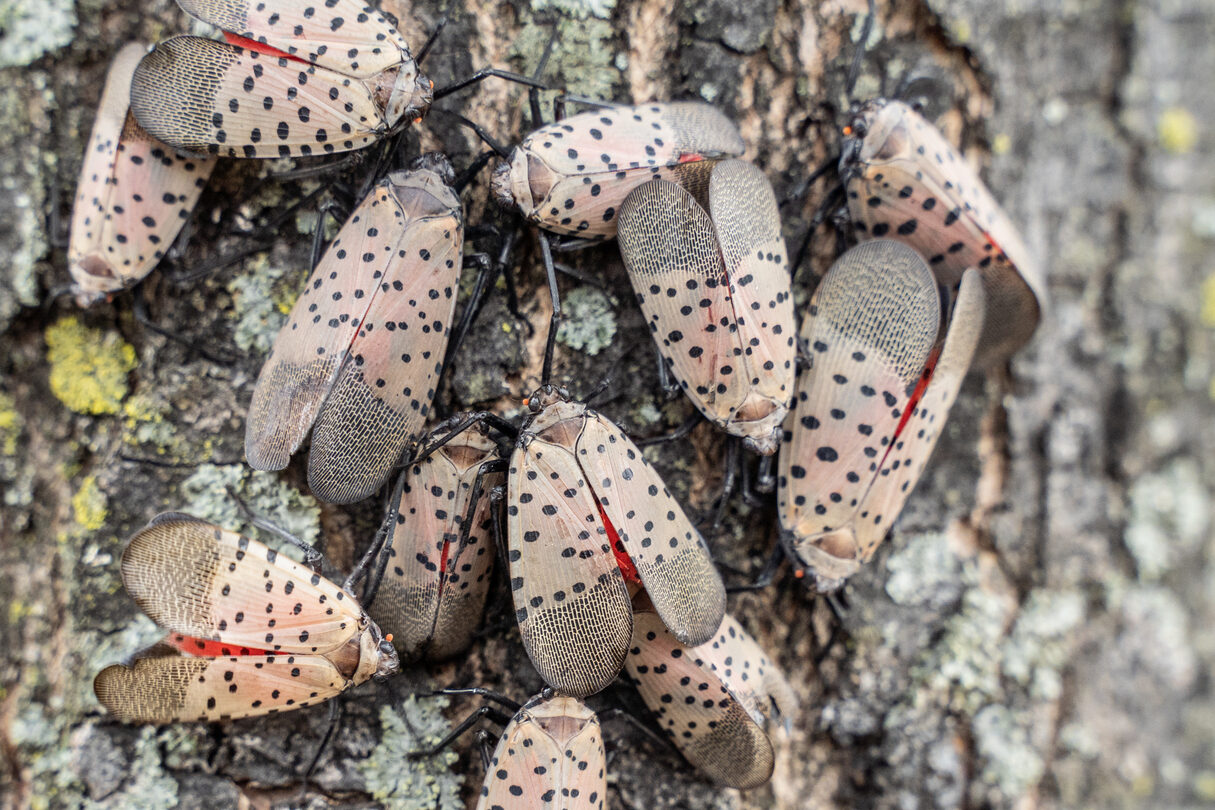
Stopping the spread of lanternflies is not something that will happen on its own. They multiply quickly, and without people taking action, their numbers will continue to rise. The good news is that every person can make a difference. Squashing adults, scraping away egg masses, and reporting sightings are all effective steps. Communities that work together often see fewer infestations over time. Even if it feels small, your effort counts. Think of it like keeping a garden free of weeds. One person may not clear the whole space, but together, those small acts add up to a much bigger impact.
9. They’re Masters of Escape but Beatable
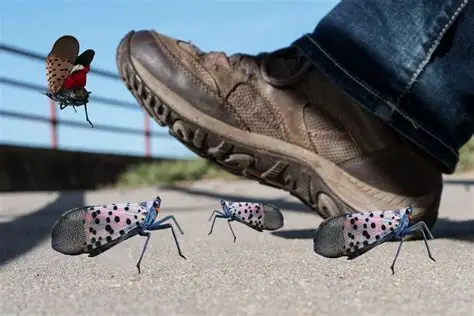
If you have ever tried to squash a spotted lanternfly, you know they can be tricky. They jump sideways when threatened, making them harder to hit. But that does not mean you should give up. Many people find success with quick double stomps or using handheld vacuums to capture them. The key is not letting them get away once you spot one. Acting fast and staying persistent is what works best. Each one you manage to remove is one less laying eggs later. It may take patience, but the results are worth it when you see fewer the next season.
10. You’re Most Likely to See Them in These States
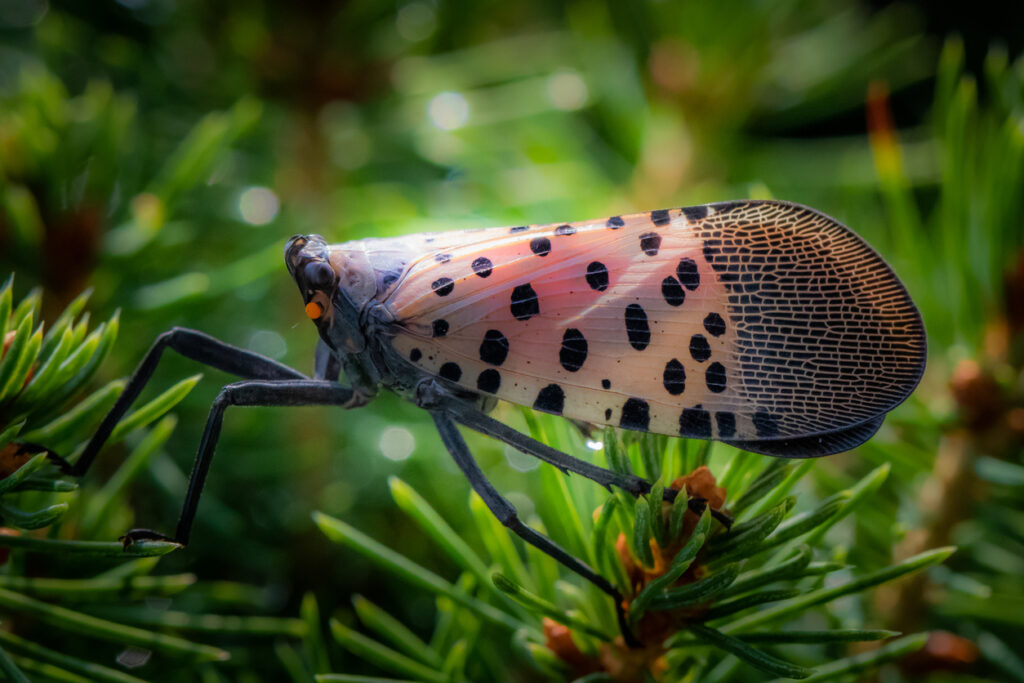
While the spotted lanternfly has been reported in many places, certain states are dealing with the heaviest infestations. Pennsylvania, New Jersey, New York, Delaware, Maryland, Virginia, Connecticut, Ohio, and Indiana are at the top of the list. They have also been spotted in Illinois, North Carolina, Massachusetts, Michigan, California, and Oregon. If you live in or visit these states, be alert. The more aware you are, the better chance you have of spotting and removing them before they multiply. Being mindful of where you travel and what you transport can help slow their spread to new locations.
11. Squashing a Bug Can Actually Help the Planet

It is not often that killing a bug is encouraged by scientists, but the spotted lanternfly is an exception. Every time you squash one, you reduce its ability to damage trees, crops, and local ecosystems. While it may feel like a small action, it is one that has real environmental benefits. These insects are not native to the United States, and they throw local ecosystems off balance. By stepping in to control them, you are helping protect the environment around you. So the next time one lands close, remember it is worth the effort to stomp it out.
This story 11 Reasons to Squash the Spotted Lanternfly and Where You’ll See Them Next was first published on Daily FETCH


